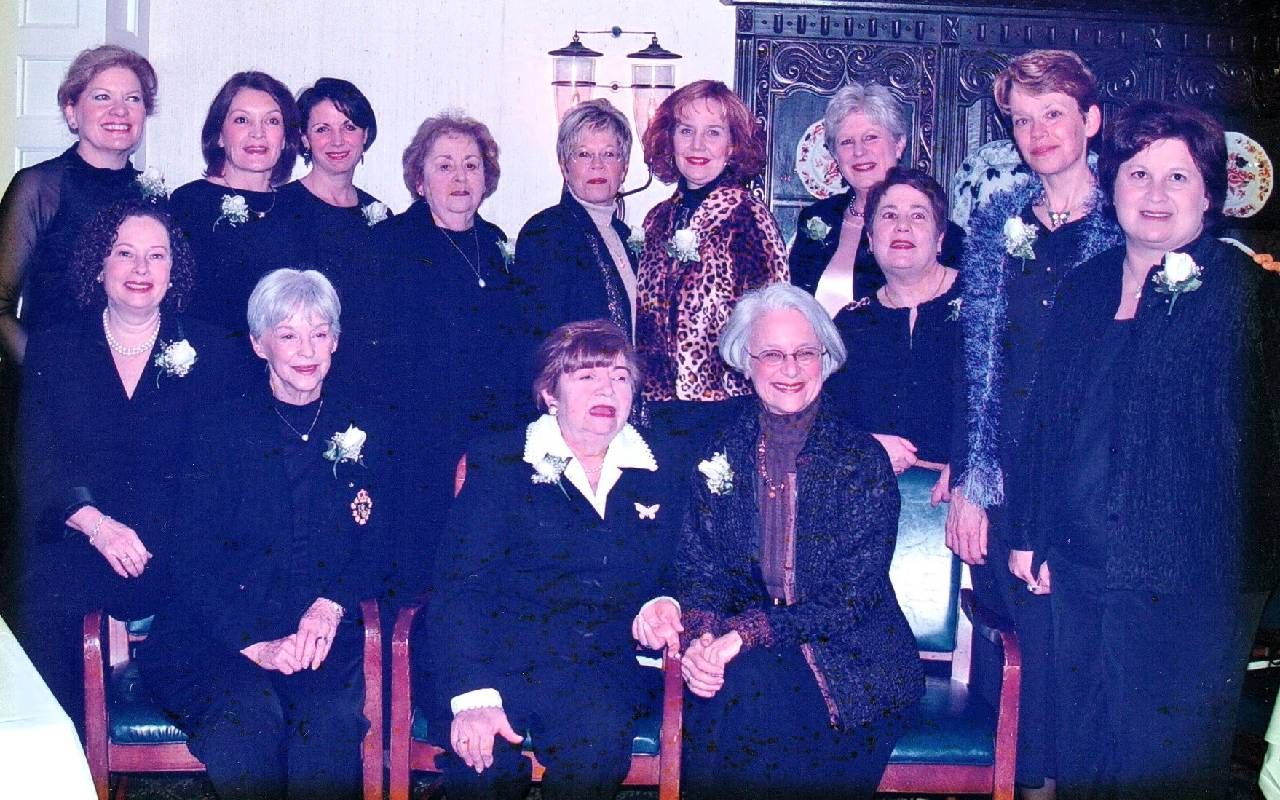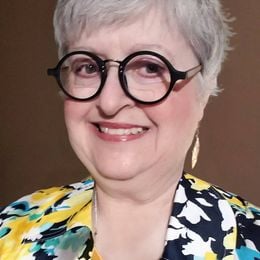A Multigenerational Group in Indiana Is Committed to Holocaust Education
Launched 25 years ago, CYPRESS in southern Indiana continues to foster understanding while reducing hatred and antisemitism in their community
The speaker finished her presentation on the Holocaust and was approached by a high school freshman boy who said, "Thank you for coming today. This is the first time I've ever heard of the Holocaust."
I read this anecdote on the Facebook page of author Margaret McMullan, who spoke at Castle High School in Newburgh, Indiana, in fall 2023.

I was horrified. Sixteen years ago, our son graduated from Castle, where he had a well-known Holocaust educator, Lisa Muller, for freshman English. I remember my son's emotional response when he heard Eva Kor, a Holocaust survivor who was a twin and had been experimented upon by Dr. Josef Mengele in the Auschwitz concentration camp.
Yet Margaret McMullan, award-winning author, Fulbright scholar and National Endowment for the Arts fellowship in literature winner, had received the comment from the high school boy after speaking about the Holocaust. Outside of my tiny bubble, ignorance still held sway.
Fighting Ignorance
After speaking at the University of Southern Indiana, McMullan was invited by a local group to speak at middle and high schools in southwestern Indiana. Her book, "Where the Angels Lived," invites readers to travel with McMullan, her husband and her teenage son in search of a Jewish ancestor, Richárd Engel de Jánosi from Pecs, Hungary, who died at the Mauthausen concentration camp in occupied Austria. McMullan knew little of her Jewish heritage until she visited the Israeli Holocaust Museum and learned that a family member had died in a concentration camp.
"Thank you for coming today. This is the first time I've ever heard of the Holocaust."
I sought more information about what our community did to fight ignorance about the Holocaust. McMullan, a former colleague of my husband's at the University of Evansville, steered me to a local group I didn't know existed.
Since 1999, a multigenerational group of women has been engaging educators in southern Indiana about ways to combat antisemitism, bullying and injustice. The Committee to Promote Respect in Schools (CYPRESS) started with a small group from the local Jewish temple.
Carol Abrams, a civic activist and philanthropist, has been the group's chair since the beginning and is now in her early eighties. Abrams said the group realized buying materials for educators and students would be wasteful if the teachers didn't have the tools to teach about the Holocaust.
Abrams said, "We put together our first teacher workshop within a few months. It was a great success, and about fifty teachers attended."
For a quarter of a century, CYPRESS has provided extensive teacher education throughout southwestern Indiana, with regular workshops, programs with nationally-known speakers and other activities. As the group grew, women from non-Judaic organizations joined, including representatives of the Public Education Foundation, private and public schools.
Abrams explained that their growth was propelled by something the group calls "Cypress moments," when synchronicity led members to expand their reach into other areas.
A Chance Meeting With Steven Spielberg
CYPRESS's early years were marked by successful teacher workshops and bringing in speakers. After Steven Spielberg made "Schindler's List," the stories of Holocaust survivors so profoundly moved him that he started the Shoah Foundation at his alma mater, the University of Southern California, to preserve testimonies of survivors and those associated with camps. (Shoah means Holocaust in Hebrew.)
A friend pointed to a nearby table, "Carol, there's Steven Spielberg."
The Evansville group wanted to secure the local or regional stories and started inquiring and working with USC. While a relationship was already established, a "Cypress moment' frosted the proverbial cake and may have ensured the project in Evansville.
CYPRESS chair Abrams and her husband Howard ate dinner with friends at the Rockefeller Mansion restaurant one evening in Westchester, New York. Abrams, who is laser-focused on moving CYPRESS into new areas, told her friends about working with the Shoah Foundation.
A friend pointed to a nearby table, "Carol, there's Steven Spielberg."
Having lived in New York, Abrams knew not to interrupt his private dinner. But what should she do? This was a rare opportunity. As she pondered her options, a waiter stopped by the table and Abrams asked him to give Spielberg a note. The waiter passed the note to the famous director.
When Spielberg suddenly rose and headed to the back of the restaurant, Abrams looked at her husband and said, "Howard, you know what to do."
Spielberg was talking on a pay phone. After the call, Howard said, "My wife has been working with Doug Greenberg (the Shoah Foundation director) and would love to tell you about Evansville." Spielberg agreed to visit the table.
He came to the table after the Abrams group had many extra cups of coffee. Abrams told him about their plans for the Evansville repository at the Central Library.
Spielberg affirmed his commitment, "Outside of my children, nothing is more important to me than this."
Curating DVD Resources
More than a hundred testimonies arrived in 2005, according to Erik Estep, local history librarian for the Evansville Vanderburgh Public Library. The library was among the first archives to hold DVDs instead of VHS tapes, ensuring a longer life for the material. For 20 years, these materials have been used by students and teachers in various ways, often depending on the teacher's imagination. One set up "talk shows" between pairs of students, with one student portraying an interviewer while another represented the Holocaust survivor in front of an audience.
"Outside of my children, nothing is more important to me than this."
Purdue University professor emeritus Robert Melson tells the harrowing story of hiding and escape in Poland in a testimony held in the collection. In another "Cypress moment," Melson was a favorite professor of librarian Estep years ago.
The Magic of an Opera
CYPRESS committee member Lisa Muller traveled to California to work with elite educators to develop a curriculum for the Shoah Foundation. Muller was a fellow of the National Holocaust Museum and remains active with the National Catholic Center for Holocaust Education.
CYPRESS sought ways to further its reach by making friends, providing education and raising funds to cover new projects. Learning about a children's opera that originated at a concentration camp and was seeing global revival was a perfect project that met many goals.
The Nazis maintained a model concentration camp to show the Red Cross and world that no atrocities happened on their watch. Theresienstadt, located in occupied Czechoslovakia, provided an unrealistic backdrop of how the Nazis treated Jews. While it was not a death camp, many Jews died of disease and starvation during their imprisonment.

The Nazis learned of a children's opera called "Brundibár" and ran fifty-five performances as part of their deception. The cast constantly changed because children often passed through the camp on their way to death camps. One child, Ela Stein Weissberger, was in every performance.
Abrams noted that "the model concentration camp was outside of Prague and high profile arts, writers and musicians came to the camp. But it was a façade that it was an ideal camp."
"Later, the Nazis made a documentary, "Hitler Builds a Model Camp for the Jews," which was propaganda and an abomination," said Abrams.
Opera companies worldwide began reviving "Brundibár" in the 1990s, the tale of two children looking for milk for their ailing mother. Brundibár, the main character and villain, is an organ grinder who resembles Hitler. The name Brundibár means "bumblebee" in the Czech language.
At age 11, as a Therensienstadt resident, Weissberger performed in all 55 operas as the cat, one of three animals in the opera. Her presence half a century later electrified the audience that she survived the Holocaust to be involved with these performances.
In 2003, illustrator Maurice Sendak ("Where The Wild Things Are") and Broadway legend Tony Kushner ("Angels in America") published a children's picture book based on the opera.
What once was used in a place of horror could now be made into magic, first with the children's book with its amazing illustrations. Members of CYPRESS learned that the Chicago Lyric Opera was staging a production of "Brundibár."
A group, including then-Evansville Philharmonic Orchestra conductor Alfred Savia, went to Chicago, where they were mesmerized by Maurice Sendak's whimsical sets and costumes. Ela Stein Weissberger served as narrator. At age 11, as a Therensienstadt resident, Weissberger performed in all 55 operas as the cat, one of three animals in the opera. Her presence half a century later electrified the audience that she survived the Holocaust to be involved with these performances.
CYPRESS brought "Brundibár" to Evansville, with the Philharmonic Orchestra and Chorus participating, and also rented the sets and costumes from the Lyric Opera performance. Weissberger served as the narrator.
Days before "Brundibár" would open at Evansville's Victory Theatre, England's Prince Harry attended a Halloween party in a Nazi uniform. This sent the media looking for Holocaust education stories. Abrams noted another "Cypress moment" when Paula Zahn reported a story on CNN featuring committee interviews and a backstage look at the "Brundibár" rehearsal. The event raised funds and friends for the organization, with the CNN story providing a national boost.
The Existence of Antisemitism
Six million Jews and others, and those individuals whom the German government decreed as less than, perished in the Holocaust. The United Nations declared January 27 as Holocaust Remembrance Day, the anniversary of the Auschwitz death camp liberation.
"The statistics about the abysmal understanding of the Holocaust are very scary," said Abrams. "There are fewer and fewer survivors. Much evil and misinformation exists that the Holocaust never happened or that the Holocaust was exaggerated. And some people believe the information."
The choice of a cypress tree to represent this group was no accident. The evergreen cypress has resilience, long life and beauty. What a wonderful legacy, like the long-living cypress tree, this group has left on its community, organically grown by their work to improve understanding and reduce hatred. Yet, there is more work to do.
"People in Europe didn't believe it could happen to them," said retired teacher and CYPRESS member Lisa Muller.
"We have a choice about how we want to live and how we want to treat people. Right now, we have a choice," Muller added. "We may not always have a choice."


